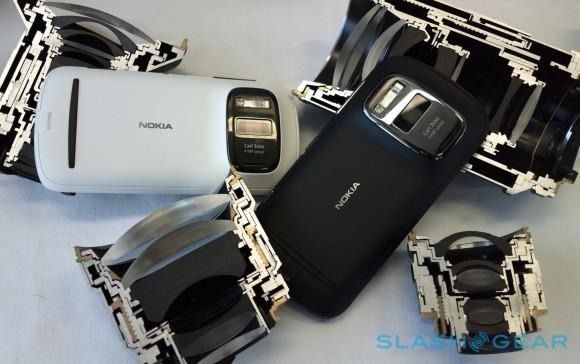SlashGear 101: Nokia Lumia 1020 Oversampling And The 5MP "Sweet Spot"
The Nokia Lumia 1020 is a smartphone with a 41-megapixel camera introduced by the company with intent on having it carried by AT&T here in 2013. This device works with a unique blend of abilities, tending not only to the massive photos produced when it takes 34MP and 38MP photos, but 5 megapixel photos as well. And why would Nokia suggest taking 5 megapixel photos when they've got a 41 megapixel sensor on this camera? It's the sweet spot!
As suggested by Nokia's own in-depth talks on the subject, the "sweet spot" in 5-megapixels exists for both image quality and for sharing purposes. You can print this size photo up to A3 side with ease and they're well and above high-quality enough for slapping up on Facebook and Google+. The key with Nokia's release of the 1020 and the 41MP / 5MP tie in lies in one word: Oversampling.
Oversampling
This is not a brand new concept for the camera industry – it's not even new to Nokia, if you consider devices like the Nokia 808 PureView – but what's happening with this device is a rebirth of efforts in the space. We'll be having a chat on the possibilities of this setup with "lossless" or high-res zooming-in on photos as well, but for now, it's all about the "amazing detail" Nokia promises in the everyday common 5 megapixel size shot.
The image you're seeing below is one coming straight from Nokia's white paper on the subject, suggesting that their technology kicks 5 megapixel photos into gear. With Oversampling – capitalized here so you know it's Nokia's unique software attacking the situation, in this article, you're in for a very obvious different league with clarity.

Nokia suggests that with the technology appearing in the Nokia Lumia 1020, you've got a high resolution sensor bringing in one whole heck of a lot more information for images than what's offered with a "standard" 5 megapixel sensor. That makes sense on a very basic level – you've got a more megapixels, so you have a better photo, right? It's not quite that simple, actually, and it's not just dependent on the number of megapixels either.

The big difference between a standard 5 megapixel shot and one produced by this new system from Nokia is in the amount of image data spread out across the photo. A standard system – here referring to technology appearing in basically every device in the market through history, especially in smartphones – takes, for example, "5 megapixel" photos but does not work with 5 million pixels of independent data.
Five megapixel photos can look like the image above on the left or the image above on the right, it all depends on how much data is given to each pixel. (Figure 3, that is)
Am I having deja-vu?
This system is extremely similar to what's been described and implemented by HTC this year with the HTC One. In their case it's called "UltraPixel" technology, and it's created a device that's been held in high regard for its photo capturing abilities, even with what the company calls it's 4 UltraPixel (or 4 megapixel) camera on its back. Have a peek at our SlashGear 101: HTC UltraPixel Camera Technology post for more information on that alternate vision.

You'll also be able to find more information on the brand-name PureView from our SlashGear 101: Nokia PureView considering the Nokia 808 PureView as well. Keep it all straight and you'll do a lot better than the vast majority of lay people in the public – good luck!
